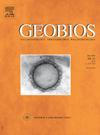菲律宾古鱼类学:新生代鱼类化石综述及其现状和未来机遇展望
IF 1.6
4区 地球科学
Q2 PALEONTOLOGY
引用次数: 0
摘要
在热带西太平洋地区,系统的鱼类化石研究很少,这阻碍了我们对导致该地区现代鱼类动物群的历史过程的理解。为了填补这一空白,我们回顾了菲律宾已发表的和国内的鱼类化石报告,评估了古鱼类学研究的现状,描述了含鱼类化石的沉积盆地和地层,强调了困难,并对未来的研究机会进行了展望。迄今为止,已有6篇已发表的文献报道了卡加延河谷盆地、伊洛科斯-中吕宋盆地和维萨扬海盆地的渐新世至更新世鱼类化石。在国内研究报告的基础上,我们确定了另外6个含有中新世至更新世鱼类化石的地层单元,如骨骼、口板、牙齿、椎骨和耳石。此外,我们还从8个沉积盆地中确定了58个化石单元,为今后的勘探提供了基础。然而,缺乏专业知识阻碍了该国对鱼类化石进行系统采样和研究。我们建议制定一个古鱼类学研究的国家计划,并通过研究人员、政府机构、私人收藏家和公众的参与来促进古生物学的发展。这一共同努力将加强我们对菲律宾古鱼类动物群的了解,这对弥合西太平洋地区鱼类化石记录的知识鸿沟至关重要。本文章由计算机程序翻译,如有差异,请以英文原文为准。
Paleoichthyology in the Philippines: A review of Cenozoic fish fossils with insights on its current status and future opportunities
Systematic fish fossil studies are scarce in the tropical West Pacific, which hinders our understanding of historical processes that resulted in the modern fish fauna in the region. To fill this gap, we reviewed published and domestic fish fossil reports in the Philippines, assessed the status of paleoichthyological research, described fish fossil-bearing sedimentary basins and formations, highlighted difficulties, and provided prospects for future research opportunities. So far, six published documents have reported Oligocene to Pleistocene fish fossils from three sedimentary basins: Cagayan Valley Basin, Ilocos-Central Luzon Basin, and Visayan Sea Basin. Based on domestic reports, we have identified six additional stratigraphic units containing Miocene to Pleistocene fish fossils, such as skeletons, mouth plates, teeth, vertebrae, and otoliths. Moreover, we identified 58 fossiliferous units from eight sedimentary basins for future explorations. The lack of expertise, however, hinders the systematic sampling and study of fish fossils in the country. We recommend developing a national program for paleoichthyological research and promoting paleontology by engaging researchers, government agencies, private collectors, and the general public. This concerted effort will enhance our understanding of the paleoichthyological fauna of the Philippines, which is vital in bridging the knowledge gap on fish fossil records in the West Pacific region.
求助全文
通过发布文献求助,成功后即可免费获取论文全文。
去求助
来源期刊

Geobios
地学-古生物学
CiteScore
3.30
自引率
6.20%
发文量
28
审稿时长
6-12 weeks
期刊介绍:
Geobios publishes bimonthly in English original peer-reviewed articles of international interest in any area of paleontology, paleobiology, paleoecology, paleobiogeography, (bio)stratigraphy and biogeochemistry. All taxonomic groups are treated, including microfossils, invertebrates, plants, vertebrates and ichnofossils.
Geobios welcomes descriptive papers based on original material (e.g. large Systematic Paleontology works), as well as more analytically and/or methodologically oriented papers, provided they offer strong and significant biochronological/biostratigraphical, paleobiogeographical, paleobiological and/or phylogenetic new insights and perspectices. A high priority level is given to synchronic and/or diachronic studies based on multi- or inter-disciplinary approaches mixing various fields of Earth and Life Sciences. Works based on extant data are also considered, provided they offer significant insights into geological-time studies.
 求助内容:
求助内容: 应助结果提醒方式:
应助结果提醒方式:


